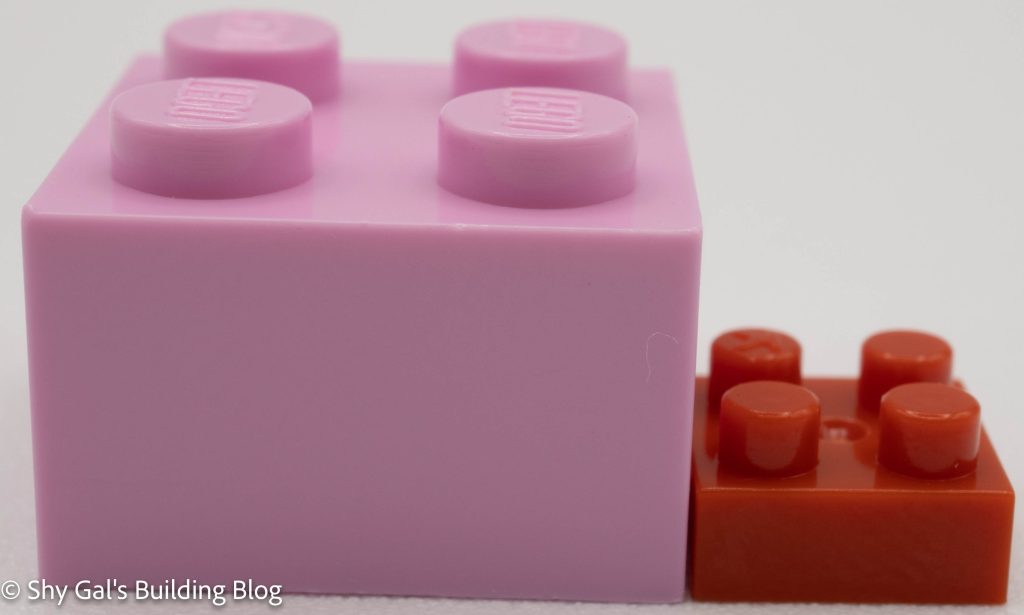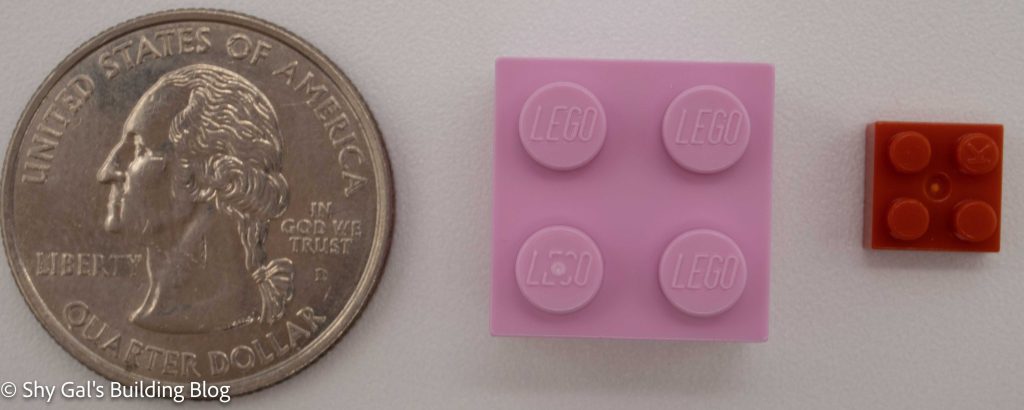
nanoblocks are small building blocks. When I am telling people about them the best way I have found to describe them is tiny LEGOs. They come in a ton of different colors and in general, I find the colors to be more vibrant than LEGO. The photo above shows a pink LEGO next to a red nanoblock.
nanoblock primarily com in kits instead of boxes of loose bricks. These kits have a ton of different themes including Pokemon, historic buildings, and anime characters. I am regularly impressed with how much detail they can get into a build that can normally fit into the palm of your hand. While Lego has been a household name for decades for their building kits, nanoblocks are much smaller and relatively new since they were only created in 2008. The company puts its own description on each package. For example, some of the packages read,
nanoblock is an extremely micro-sized building block born in JAPAN. The smallest part is a mere 4x4x5mm! “Fun to make, Fun to display and Fun to collect.” nanoblock is a stimulating and entertaining hobby material for everybody, especially for grown-ups.
Back of nanoblock packages
A description similar to this can be found in English on both Japanese and American Packaging.
I know it can be hard to compare with just measurements, so here is a picture of a quarter, a 2×2 pink LEGO, and a 2×2 red nanoblock.

As you can see, the nanoblock is much smaller than the LEGO. This means that your final builds are much smaller, making it easier to have a large collection. One of my biggest problems with LEGO is every building takes up so much space it is hard to keep them all out and display them all. On the other hand, I can easily store 50 or more in a display cabinet or Kallex from Ikea. One of the other advantages is that they can be much less expensive. Most small kits can be purchased new for $10-$25. There are deluxe kits that can cost much more but overall there is a much lower barrier to entry than with LEGO when it comes to cost.
Generally, I have only been able to get the bricks that come in a kit that comes with exactly what is needed to build that one kit. I have had a hard time getting the nanoblocks sets that are just collections of colors like NB-023. There are a number of sets like NB-023 but they are rarely in stock when I try to purchase from Plaza Japan or Amazon JP. These variety packs are similar to the LEGO classic packs, where there are a set number of each size and color that you can build.
My general findings with working with nanoblock over LEGO:
- They can be very slippery when you lay out a base layer on a table. This means that it can be hard to get the second layer lined up properly. To help this I bought a nanoblock pad to get everything lined up when I am building. There are still occasions when I can’t use the pad because sometimes the base layer has bricks on angles
- It can be difficult to pick up and place the 1×1 bricks exactly when you are sliding them into the brick right next to another; I have a pair of Japanese nanoblock tweezers for these
- The smaller kits, even the buildings, normally fit into an area of 3in x 3in x 3in. The Deluxe sets are much larger.